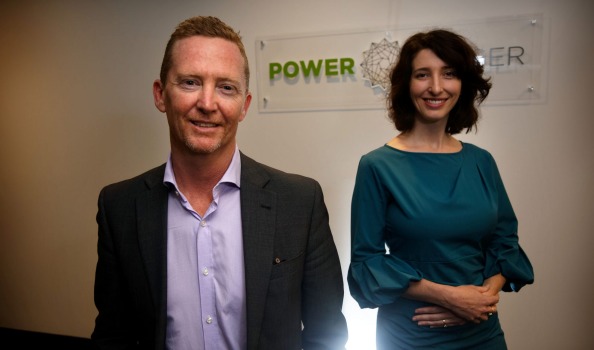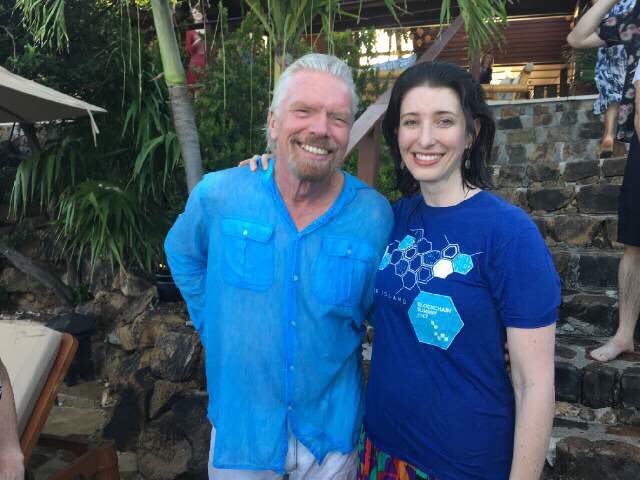
The Power Ledger is bringing Power Ledger's P2P solar energy trading blockchain technology to the world. Power Ledger Pty Ltd allows renewable energy asset owners to decide who they want to sell their surplus energy to and at what price. Using blockchain technology they provide a transparent, auditable and automated market trading and clearing mechanism for the benefit of producers and consumers. Their technology enables the sale of surplus renewable energy generated at residential and commercial developments (including multi-unit/multi-tenanted) and at homes and businesses connected to existing electricity distribution networks, or within micro-grids. Power Ledger puts the power to manage the energy economy into the hands of consumers, while maintaining the value of existing distribution networks.
Website : https://powerledger.io/
Their CEO DR. JEMMA GREEN has also managed to get the attention of investors like Sir Richard Branson in this revolutionary #blockchain project.
One short-term trial in WA has just wound up, and two are about to get underway, as the startup works towards delivering a proof of concept for the software solution both to prosumers and utilities.
“It’s the Uber of (insert your own industry)” is the common catch cry associated with many start-ups, even if it a largely inaccurate description of a range of business models. However, blockchain enabled P2P electricity trading might in fact be a case where the description is valid.
A number of startups are attempting to apply variations of the blockchain to facilitate P2P electricity trading. The cloud-based transaction ledger could potentially remove third party margins from P2P electricity trading and allow for households and businesses to access solar electricity from peers on the grid if they have unsuitable roofs for PV or simply lack the resources to install it themselves.
Blockchain is a distributed computing accounting protocol that underpins digital currency Bitcoin. Based on miner computers generating a finite number of blockchain tokens, applying the blockchain to decentralized electricity trading could provide the basis for trust between electricity traders unknown to each other through tracking electricity exchanges and transactions.
To trade electricity utilizing the blockchain, communication hardware must be fitted to a standard digital electricity meter that will keep track of electricity being generated, imported or exported. This is then converted into blockchain tokens, which are allocated to various accounts within the network – consumers, producers, and prosumers – as trading takes place between the parties.
The blockchain tokens can then be monetized, either into a standard currency like Australian dollars, or Bitcoins themselves.
By deploying the blockchain in this way, a “cross-referenced and time-specific database” of transactions is generated and stored in the cloud. This database cannot be altered, delivering the trust between the trading parties required to underpin the system.
The system tracks the electrons either fed into or taken off the grid through the principal that they will always seek the path of least resistance.
There are major advantages of the P2P trading model facilitated by the blockchain, particularly as espoused by Power Ledger’s Green. One is that it could potentially provide a model by which distributed generation can be embraced by market incumbents, utilities and network owners, without them losing out as emphatically as could be the case if grid defection gathers momentum.
Utilities could play a role in an electricity system in which P2P trading is a major part of the landscape. While ever increasing rates of rooftop PV penetration will decrease gross demand for electricity from the grid generated, distributed and retailed by utilities, there will remain the opportunity for them to facilitate the P2P trading and then supply the electricity shortfall to the P2P community. Utilities could potentially charge a premium for providing service in when shortfalls occur. Grid operators could simply charge a fee for the electrons exchanged over its networks.
Regulatory pushback could present a major hurdle for Power Ledger and others in realizing their ambitions. While P2P electricity trading may not be outright forbidden in many electricity markets, distributed energy is seldomly actively facilitated by utilities and incumbents globally have been historically obstructionist in the face of change.
Power Ledger’s Green reports that regulators in New Zealand, by contrast, have been receptive to the Power Ledger offering. Next month Auckland residents will be able to take part in P2P electricity trading via local utility Vector. The company has linked up with Power Ledger to open up the service to 500 sites across New Zealand’s most populous city. Schools, community groups, and residential homes are expected to get involved in the trial, according to a release by Vector.
Vector also points to the ability for families or communities to share solar generated power across different sites. The electricity could in fact be gifted from one household with solar to another.
Vector itself has been relatively open to the opportunities presented by distributed generation and battery storage, having supplied its SunGenie branded modules to the market since 2013 and installed over 80 Tesla residential batteries to its customers. In December it will install a 1 MW Tesla Powerpack at one of its substations.
While trading across the network is not yet allowed in many utility areas, behind the meter applications represent a smaller but still significant opportunity. Power Ledger has just concluded a trial in Bussleton, south of Perth, that saw electricity traded amongst 10 different households in a retirement village.
A third Power Ledger trial is set to launch in Fremantle, which will see electricity traded between four apartment buildings across the network. The Perth technology company is expected to announce more details as to this project shortly.
Power Ledger is not alone in attempting to apply blockchain cloud computing to electricity trading. TransActive Grid, a joint venture between LO3 Energy and ConsenSys, is also pursuing the technology. Austria’s Grid Singularity is the major European developer applying the blockchain to the energy space.
WA’s Power Ledger is clearly making some headway in getting trial projects off the ground and P2P trading between households and businesses of solar a reality today, albeit at demonstration phase. The starup is currently fundraising and while based in Perth, Green describes the company’s ambitions as global in nature.
Link to participate in the bounty : https://bounty.powerledger.io/media/Bounty-Rules.pdf
Token selling started today .. So dnt miss to having this awesome opporunity ..
Hi! I am a robot. I just upvoted you! I found similar content that readers might be interested in:
http://reneweconomy.com.au/power-ledger-expands-trials-blockchain-electricity-trading-38771/
Downvoting a post can decrease pending rewards and make it less visible. Common reasons:
Submit
Sure
Downvoting a post can decrease pending rewards and make it less visible. Common reasons:
Submit
Another great ICO opportunity. Lets hope that this one will provide the windfall opportunity to those who chooses to invest in it.
Downvoting a post can decrease pending rewards and make it less visible. Common reasons:
Submit
Yes right. .
Downvoting a post can decrease pending rewards and make it less visible. Common reasons:
Submit
Great article and well explained.
We met the team a while ago and looked what's happening behind the scenes if you are interested read here http://bit.ly/2x9cACH
Downvoting a post can decrease pending rewards and make it less visible. Common reasons:
Submit